Mira Str.40-2, 222307, Molodechno, Belarus
astroseriv@yandex.by
Abstract: I present the results of listening to the 88.6 MHz radio airwaves from January to December 2023.
The observations were carried out at a private astronomical observatory near the town of Molodechno (Belarus) at the place of Polyani. A 5 element-antenna directed to the west was used, a car FM-receiver was connected to a laptop with as processor an Intel Atom CPU N2600 (1.6 GHz). The software to detect signals is Metan (author – Carol from Poland). Observations are made on the operating frequency 88.6 MHz (the FM radio station near Paris broadcasts on this frequency). The “France Culture” radio broadcast transmitter (100 kW) I use is at about 1550 km from my observatory which has been renewed in 1997. The method of listening to a radiophone is more “sensitive” in terms of detecting meteor signals compared to the method of automatic detection, so it is more interesting. Regular (daily) observations 3-5 times a day are of scientific value, because they have uniformity, as performed on the same equipment.
2 Listening to radio echoes on 88.6 MHz
In order to save observation time and to increase the efficiency of listening for the radio meteor echoes in order to obtain a more complete observation series, I made a modification to the method with the introduction of a definition of “synthetic” hourly rate numbers (Figure 1–12).
Listening to the radio signals for 10 minutes with extrapolation of the data to 1 hour was done about 3 to 5 times a day. At the times of the maxima of the main meteoroid streams, the counting of meteor echoes was performed on average every 2–3 hours in order to get a better coverage of the observational series. This was done in order to control the level of the hourly rates as well as to distinguish between periods of tropospheric passage and other natural radio interference.
The maximum Quadrantid (#0010) activity was recorded at 11h50m UT 04 January 2023 (λʘ = 283.50°), while the traditional estimated moment of maximum should have occurred around 03h UT 04 January 2023 (λʘ = 283.155°). Most likely the peak of the shower was short-lived and I missed it.
February is a quiet month – the activity of hourly radio signals monotonically decreased from an average of 40 at the beginning of the month to an average of 20.
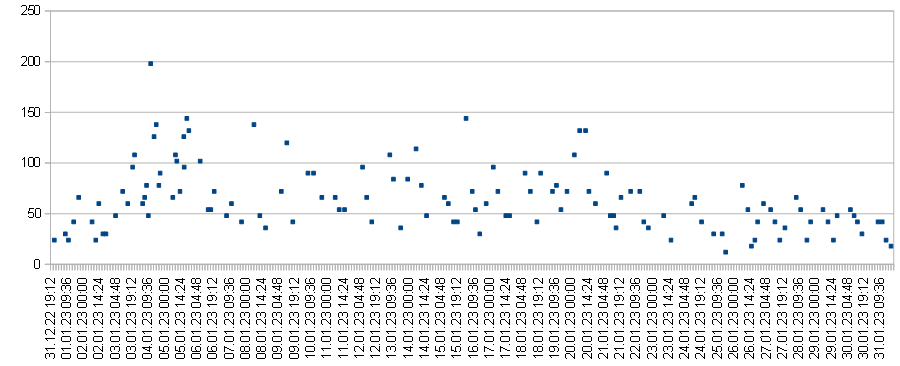
Figure 1 – The result with the calculated hourly numbers of meteor echoes by listening to the radio signals during January 2023.
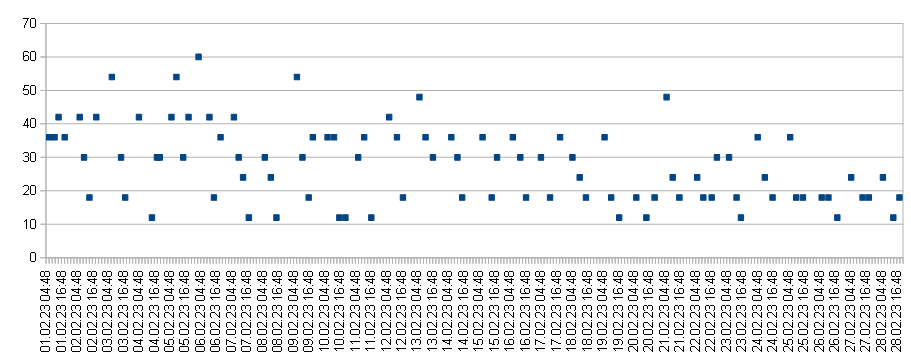
Figure 2 – The result with the calculated hourly numbers of meteor echoes by listening to the radio signals during February 2023.
March is also a quiet month, with the activity graph “opposite” to that for February. The average hourly activity of signals grows from 20 to 40 signals per hour.
The Lyrid (LYR, #0006) maximum was recorded on April 22–23 at 150 signals per hour.
The broad maximum of the eta Aquariids (ETA, #0031) was recorded from May 5 to 8 with radio meteor activity at 250 per hour. On May 7, there is one observation with an activity of 400 signals per hour, which was not confirmed by subsequent observations.
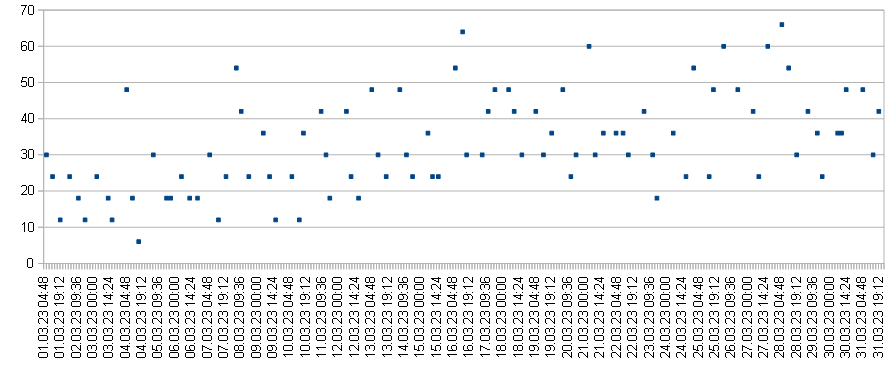
Figure 3 – The result with the calculated hourly numbers of meteor echoes by listening to the radio signals during Mart 2023.
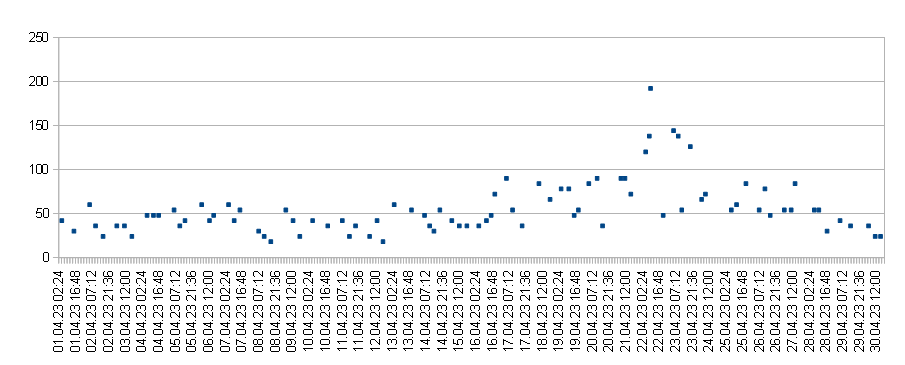
Figure 4 – The result with the calculated hourly numbers of meteor echoes by listening to the radio signals during April 2023.
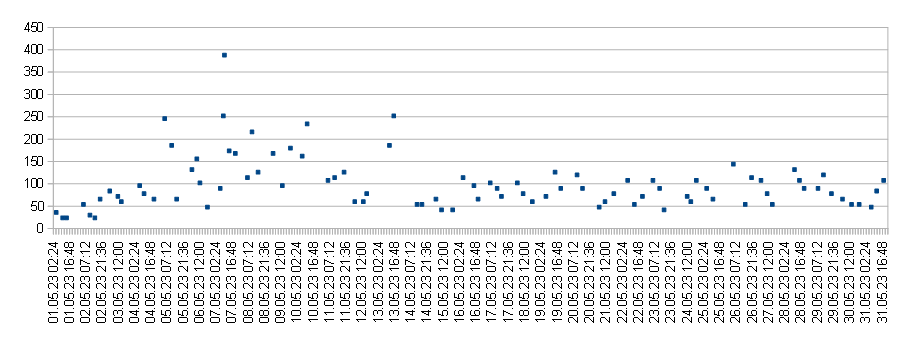
Figure 5 – The result with the calculated hourly numbers of meteor echoes by listening to the radio signals during May 2023.
In June, the activity trend resembles sinusoidal oscillations with several maxima of different intensity. The first broad maxima with a peak near June 12 may belong to the Daytime Arietids (ARI, #00171) and zeta-Perseids (ZPE, #0172). According to IMO, the peak of the daily ZPE (#0172) is around June 10, which coincides well with my radio observations.
The maximum of the Perseid (#0007) activity was recorded in the interval August 12–14 with a level of 600 signals per hour. The peaks on October 8 and October 22 likely belong to the Draconids (DRA, #0009) and Orionids (ORI, #0008), respectively.
The blurry faint peak around Nov. 10–11 may belong to the Northern Taurids (NTA, #0017). The more pronounced peaks on November 17–18 and November 22–23 can belong to the Leonids (LEO, #0013) and December Monocerotids (MON, #0019), respectively.
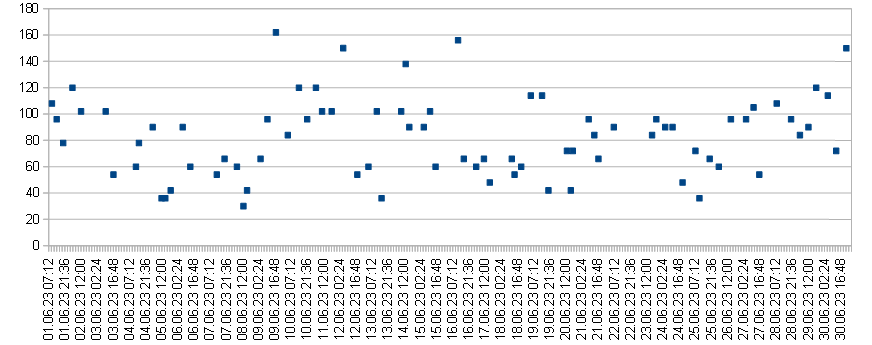
Figure 6 – The result with the calculated hourly numbers of meteor echoes by listening to the radio signals during June 2023.
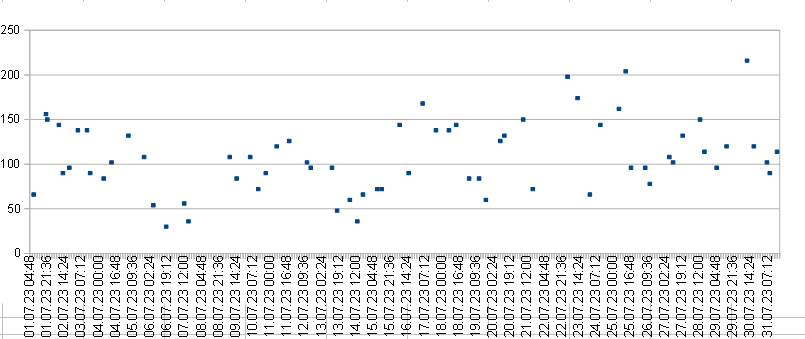
Figure 7 – The result with the calculated hourly numbers of meteor echoes by listening to the radio signals during Jule 2023.
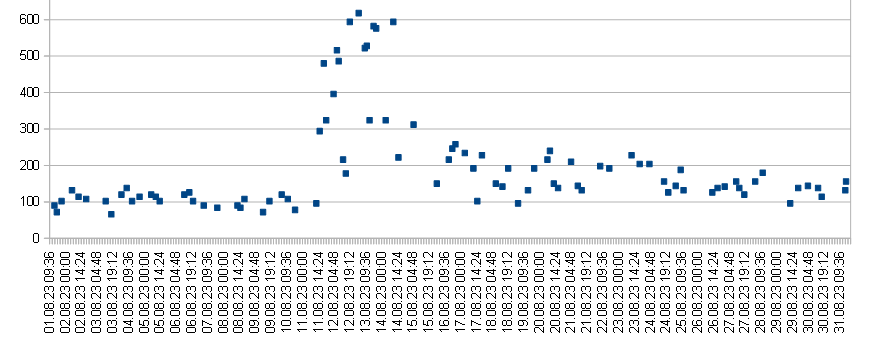
Figure 8 – The result with the calculated hourly numbers of meteor echoes by listening to the radio signals during August 2023.
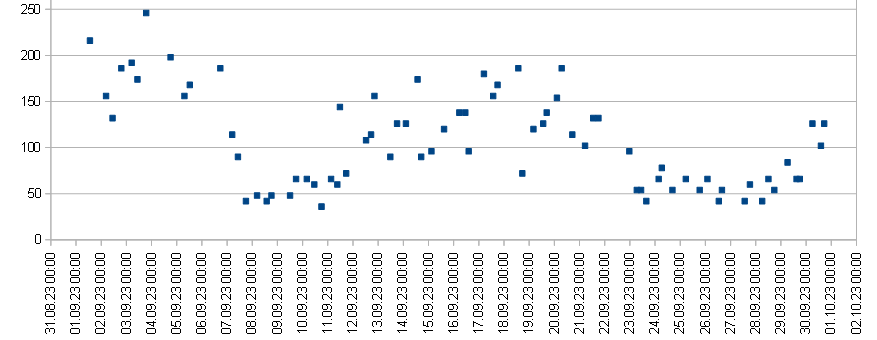
Figure 9 – The result with the calculated hourly numbers of meteor echoes by listening to the radio signals during September 2023.
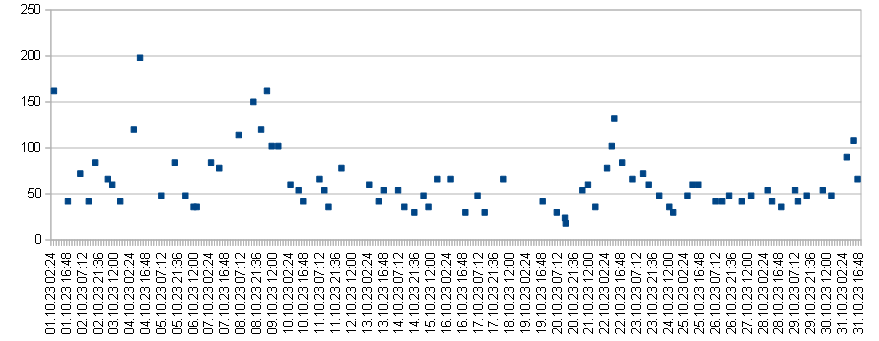
Figure 10 – The result with the calculated hourly numbers of meteor echoes by listening to the radio signals during October 2023.
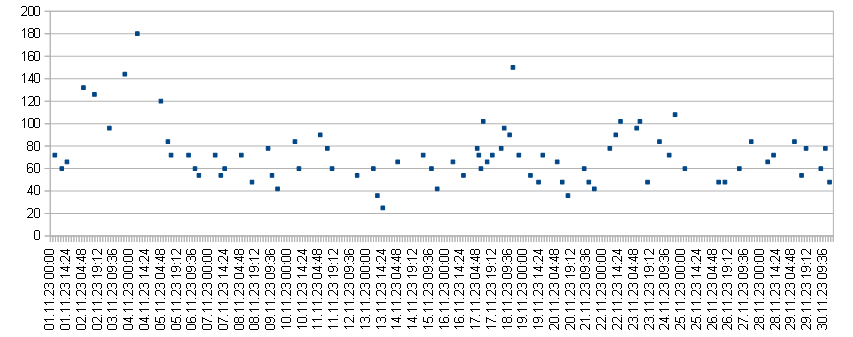
Figure 11 – The result with the calculated hourly numbers of meteor echoes by listening to the radio signals during November 2023.
The primary peak of the Geminids (GEM, #0004) at the level of 650–700 signals occurred during the interval 05h40m–08h40m UT on 14 December 2023. Within this interval the antenna “looks” in the radiant area (western direction). The second peak was registered with activity at an average of about 550 signals per hour during the interval 15h10m–17h55m UT on December 14, which almost coincides with the traditional maximum at 19h16m UT on 14 December 2023 (λʘ = 262.2°). The peak on December 22 probably belongs to the Ursids (URS, #0015).
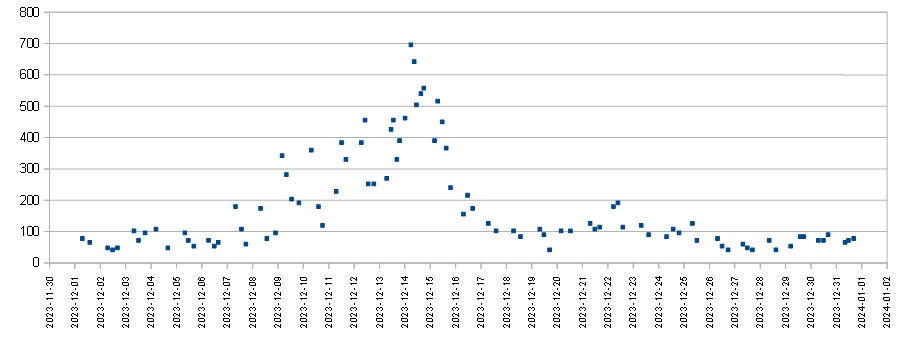
Figure 12 – The result with the calculated hourly numbers of meteor echoes by listening to the radio signals during December 2023.
3 Automatic detection of meteor signals on 88.6 MHz.
Figures 13–15 show the results of automatic observations for January, August, and December 2023. During the year, experiments were underway to increase the sensitivity of the Methane program in terms of meteor signal detection. From December 5 to 24, a more sensitive program threshold for meteor events had been set.
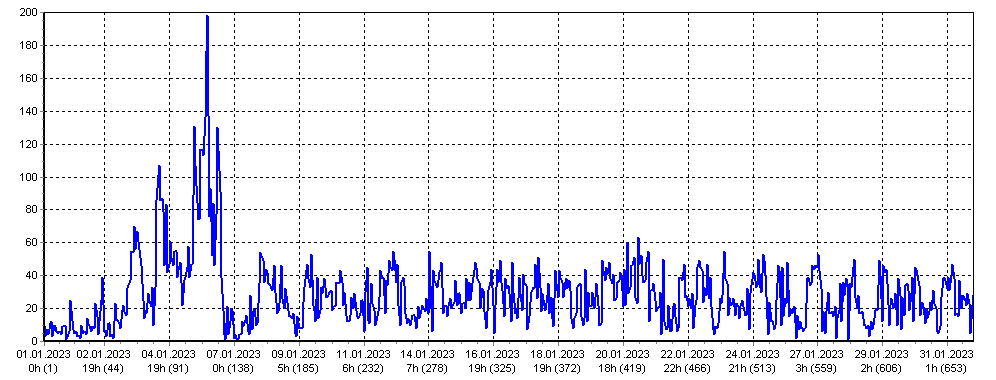
Figure 13 – The result of automatic detection of meteor signals for January 2023 in the Methane program.
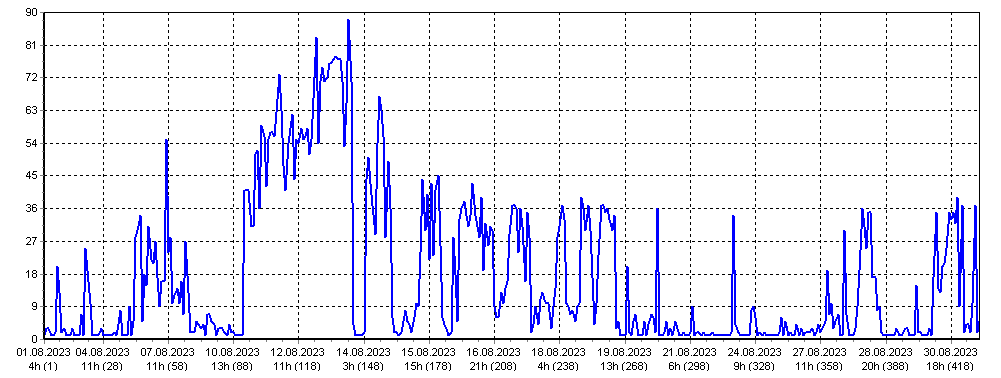
Figure 14 – The result of automatic detection of meteor signals for August 2023 in the Methane program.
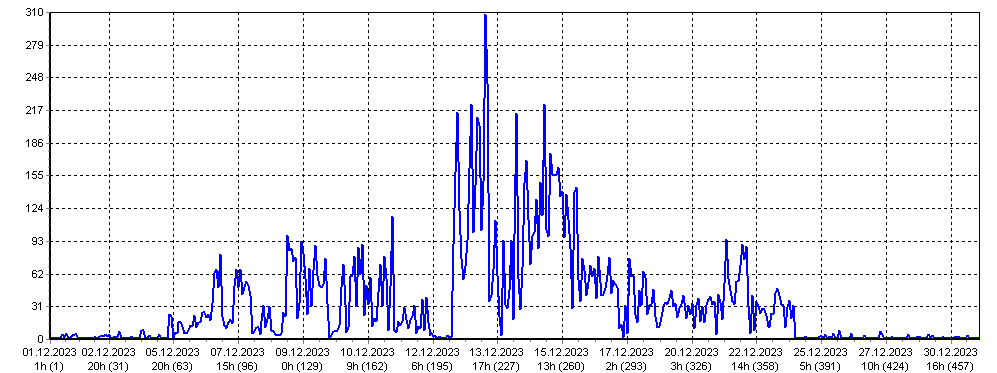
Figure 15 – The result of automatic detection of meteor signals for December 2023 in the Methane program.
4 Conclusion
The method of counting the radio meteor echoes by listening is about 3 times more sensitive than the method using automatic detection of meteor echo signals with music or speech. Experiments are underway to increase the sensitivity of the Metan software for automatic detection of meteor signals. The method of listening to the radio echoes is very interesting, because it allows you to “scan” the dynamics of the total meteor background over a long time, to identify periods of low activity, periods of high activity, as well as outbursts and the peak activity of the most prominent meteoroid streams. Not all maxima in the meteor shower plots could be classified with known meteor streams from the IMO meteor shower working list data (meteor calendar). Probably some unidentified maxima are the result of some enhanced activity of one or a superposition of several minor meteor showers, which are detected by video networks.
Acknowledgment
I would like to thank Sergey Dubrovsky for the software he developed for data analysis and processing of radio observations (software Rameda). I thank Carol from Poland for the Metan software. Thanks to Paul Roggemans for his help in the lay-out and the correction of this article.
References
Rendtel J. (2023). “Meteor Shower Calendar”. IMO.




